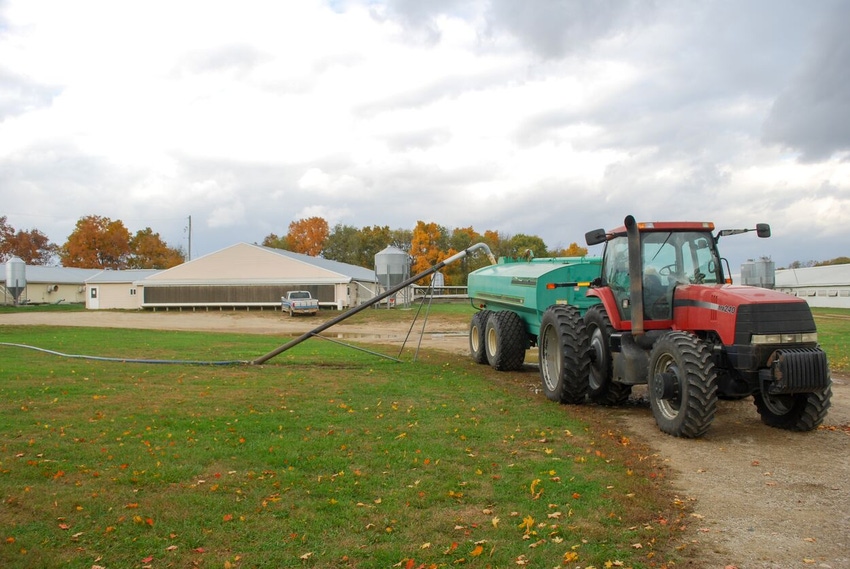ISU researchers investigate manure pumping effects on disease
Pig mortality rate in the two weeks following the first pumping event was 21.3% lower in sites that transported manure using tanks compared to sites using drag hoses.
September 18, 2023

With funding from the Swine Health Information Center, the Foundation for Food & Agriculture Research and Pork Checkoff, a team comprised of Daniel C. L. Linhares, Gustavo de Sousa e Silva, Ana Paula Poeta Silva and Daniel Moraes with the Iowa State University College of Veterinary Medicine have begun a study examining manure pumping effects on disease onset in wean-to-finish pigs. Their objective is to identify practices related to manure pumping that can be managed to decrease incidence of disease onset in these pig populations.
Their study will identify risk factors associated with disease onset in wean-to-finish sites following manure pumping and spread as well as detection of porcine reproductive and respiratory syndrome virus and porcine epidemic diarrhea virus in pigs and environmental surfaces of wean-to-finish sites before and after manure pumping. The interim report reveals learnings to date.
A preliminary analysis using the participating wean-to-finish sites that pumped manure between August 2020 and December 2022 was done to describe the association between manure pumping practices and pig mortality in wean-to-finish sites. In this preliminary analysis, the outcome of interest was the cumulative mortality in the two weeks following the pumping event, divided by the total number of existing pigs on site until the pumping date (percentage).
Other risk factors, including manure pumping-related practices, transport method (tank or drag hose), manure application method to the crop (direct injection or airway), and facility storage (deep pit or lagoon), was tested using mixed-effect binomial regression.
The preliminary analysis concluded a total of 3,000 pumping events occurred during the study period across 594 wean-to-finish sites and 1,358 pig lots. A median of two pumping events per pig lot was observed. The pig mortality rate in the two weeks following the first pumping event was 21.3% lower in sites that transported manure using tanks compared to sites using drag hoses.
No statistical difference in mortality was observed between sites that applied manure to surrounding fields using either direct injection or airway. Likewise, no statistical difference was observed in mortality between sites that included manure storage in deep pits versus lagoons or concrete vats.
The preliminary data analysis found that using tanks to transport manure to crop fields that are farther away from the pumped site was associated with a lower mortality in the two weeks following the first pumping event when compared to drag hose. These results demonstrated an association between the distance at which manure was applied and disease onset and mortality rates after pumping events.
The next step for the ongoing study will be modeling that includes sites with and without disease onset, and with and without exposure to pumping. This will reveal the spatial-temporal relationships between the risk of disease onset and pumping manure into the site surroundings, or pumping manure out. Final results of this ongoing study will be posted when available.
SHIC, along with the Foundation for Food & Agriculture Research and Pork Checkoff, funded the Wean-to-Harvest Biosecurity Research Program to address an identified gap in U.S. swine industry emerging disease preparedness and develop cost-effective innovative tools to enhance biosecurity during the wean-to-harvest phases of pork production.
You May Also Like



